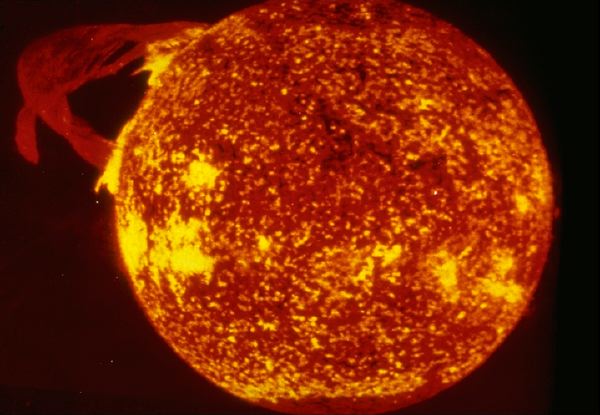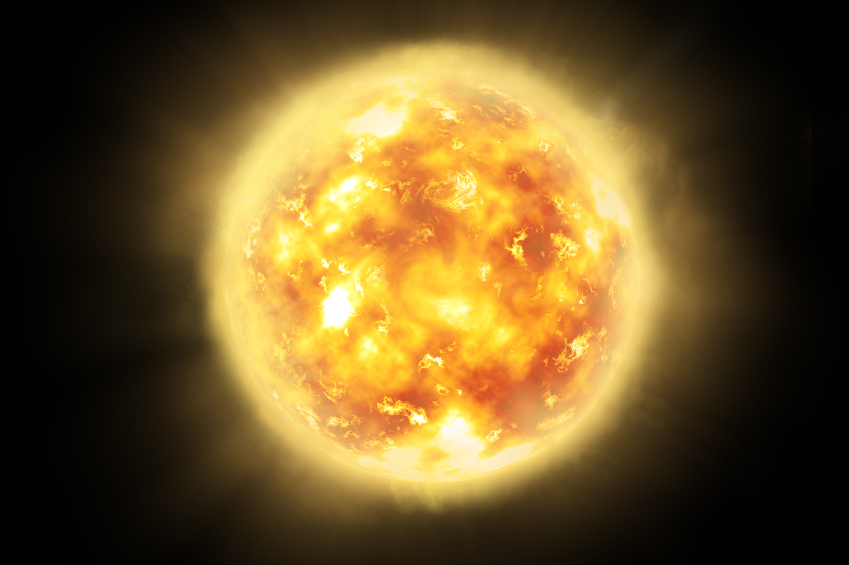
Space weather is defined by researchers as a collection of physical processes emitted by the Sun that affect the Earth and surrounding space. The Sun is constantly ejecting energy as flares of electromagnetic radiation. Most of these are in the form of radio waves, ultraviolet radiation, X-rays, infrared radiation, and light. The electrically-charged particles travel outward as solar wind, carrying projections of the Sun’s magnetic field with them. Eventually, these particles reach the Earth.
This, scientists say, is where the fun begins. A unique interaction between our planet’s magnetic field and the outer atmosphere take place. Sometimes, extreme space weather can cause large concentrations of energetic particles to collect around the magnetosphere and ionosphere, leading to magnetic variations. These variations can cause beautiful striations in the sky, which we know as auroras. However, beyond the beauty lies a potentially dangerous technological and societal problem.
Cascading effects
A main concern is that communication technology is highly sensitive to space weather. It is recognized that extreme solar flares can disrupt communication infrastructure -- even those made from the latest materials. Given how heavily we rely on these channels, there could be havoc or even societal collapse should one of these fail. Critical infrastructure, especially those associated with the receipt and delivery of sensitive global data, should be assessed for sturdiness and viability. Beyond that, new methodologies and tools are needed to determine interdependencies between and among countries. Put simply: a multi-risk governance approach needs to be designed. This would enable coordination between sectors to mitigate the risk of isolation.
For example, a pan-European vulnerability assessment of a specific power grid would identify critical issues in a case of extreme space weather. Operators at the structure can determine whether a specific system would directly (or even indirectly) be vulnerable to space weather. If a potential hazard is found (e.g. dependencies on GPS), then contingencies should be made to build better communication between science and industry to ensure that relevant and reliable information will still be available.
Better forecasting
Early warning and preparedness can limit damage caused by severe weather. As of this writing, there are already several space-weather forecasting machinations in place in both the U.S. and Europe. Nevertheless, the new reports stress the need for consistency in these forecasts, and the need to obtain them from different service providers, if possible.
Current technologies are still unable to accurately predict space weather due to a limited understanding of the magnetic field orientation of certain electrons as they hit the Earth. As such, there are knowledge gaps within our system that need to be addressed.
Given these identified risks, the EU provides a policy background check which allows its members to state the top risks their country faces. The Union Civil Protection Mechanism show six countries in the EU listing space weather in their risk assessment. Authors of the report say that more emphasis should be given to the detrimental effects of space weather. It is untrue to think that activities happening billions of miles away have no bearing to modern life.
Solar activity can trigger radio blackouts and become a threat to satellite operations, aviation, and space flights. Magnetic storms can affect power grid operations. This is a valid concern that needs attention and resources.
Sources:
Please contact us for more information.























